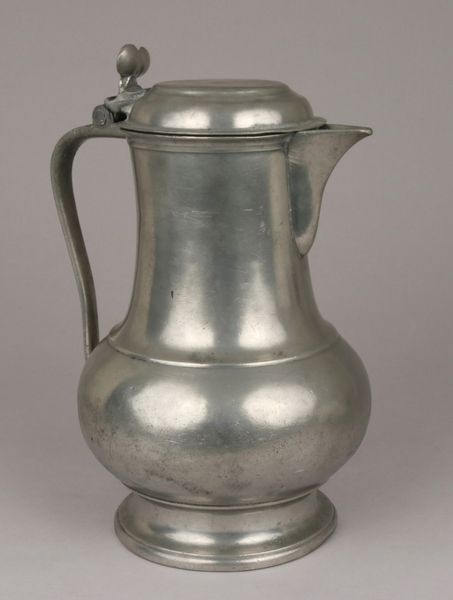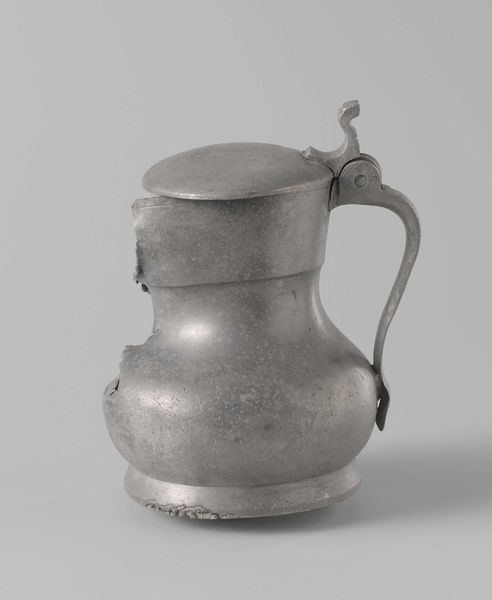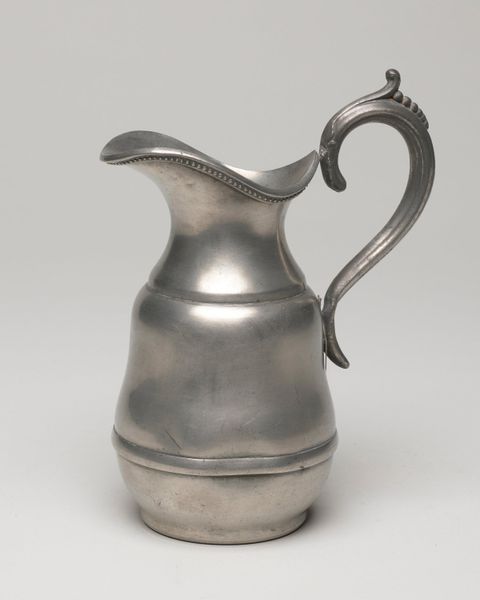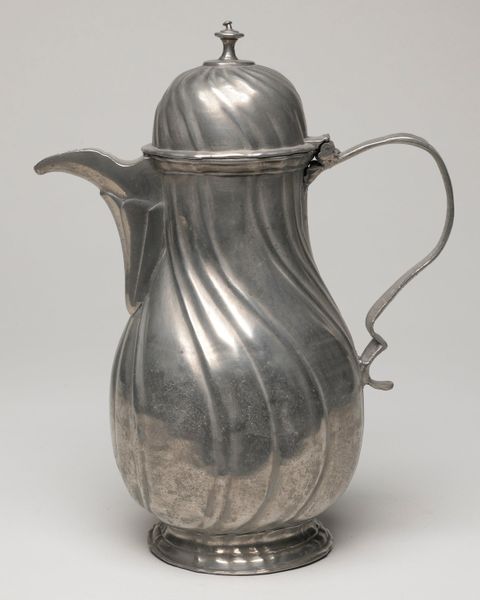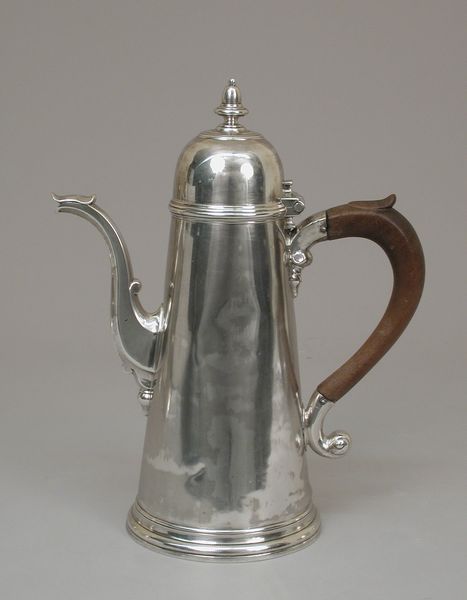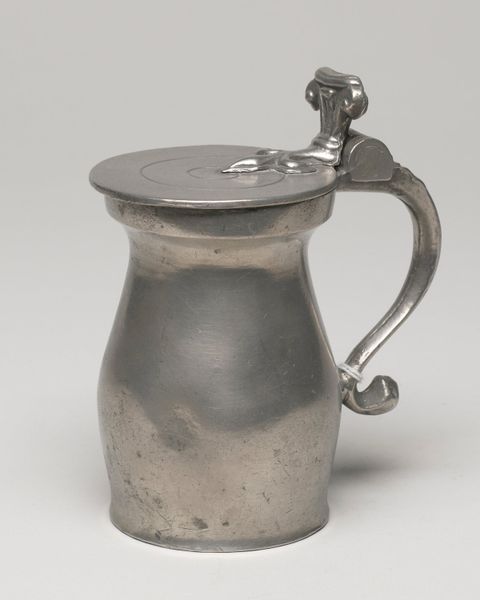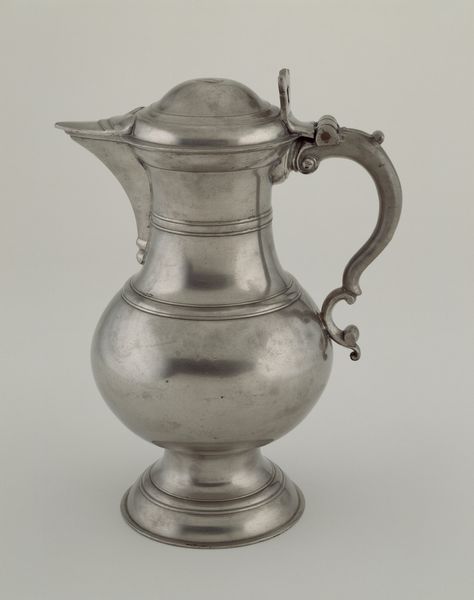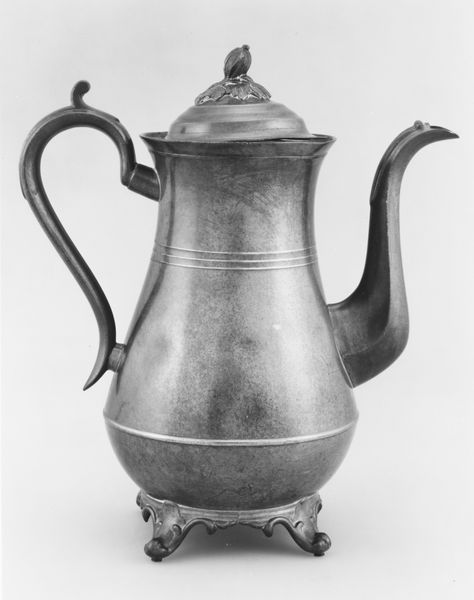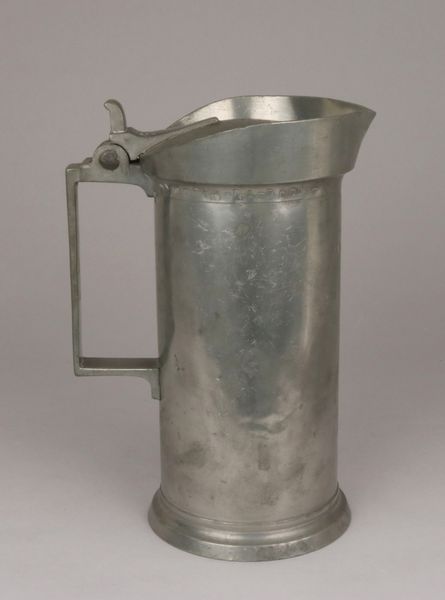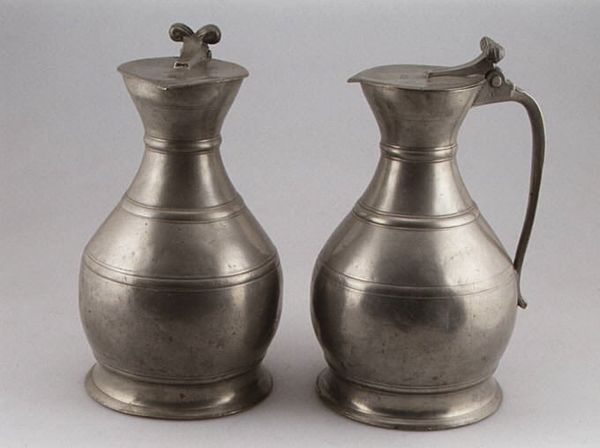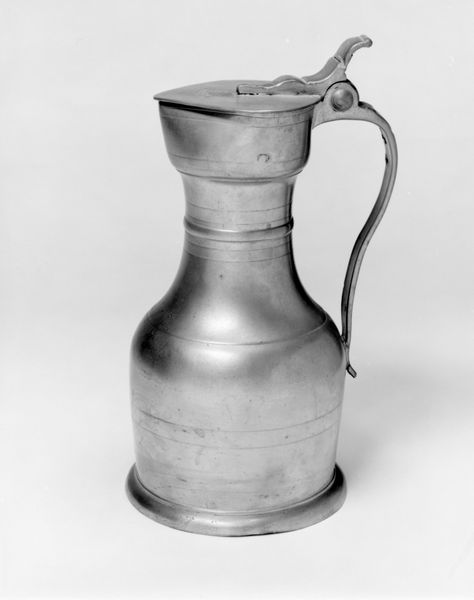
ceramic, sculpture
#
ceramic
#
stoneware
#
sculpture
#
ceramic
#
decorative-art
Dimensions: Overall: 8 7/8 × 6 1/4 × 5 1/4 in. (22.5 × 15.9 × 13.3 cm)
Copyright: Public Domain
This pitcher was made in France in the 1760s by Pierre Malmouche from pewter. It is a utilitarian object, but it also reflects the social and cultural values of its time. During this era, French society was highly stratified, with a clear distinction between the aristocracy and the common people. Pewter, while not as valuable as silver or gold, was still a relatively expensive material, indicating that this pitcher was likely owned by a member of the middle or upper class. The pitcher's design, with its elegant curves and simple lines, reflects the Neoclassical style that was popular during this period. This style, which drew inspiration from ancient Greece and Rome, was associated with reason, order, and refinement. Understanding this pitcher requires knowledge of the social and economic history of 18th-century France. By studying historical documents, such as inventories, account books, and trade records, we can learn more about the people who owned and used objects like this pitcher.
Comments
No comments
Be the first to comment and join the conversation on the ultimate creative platform.
